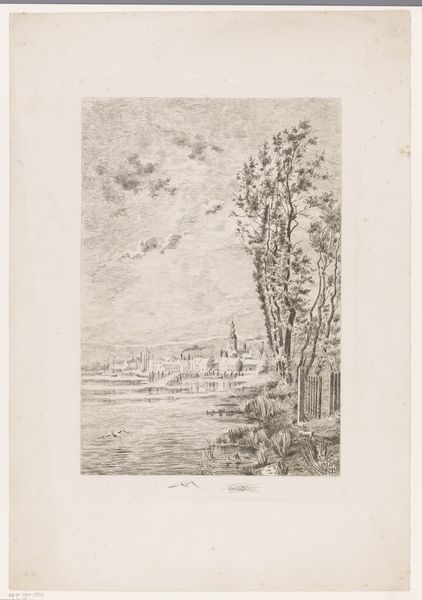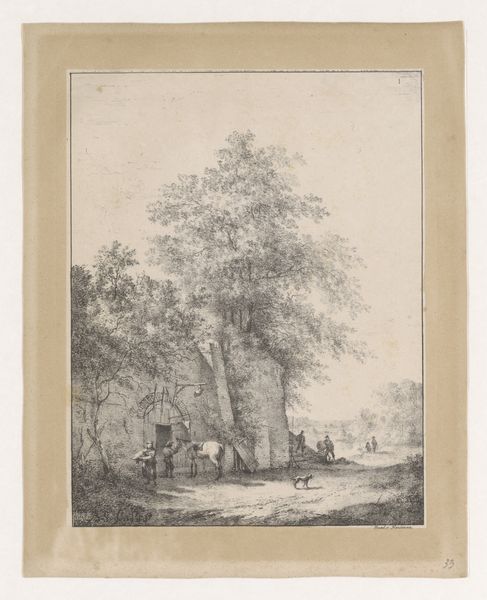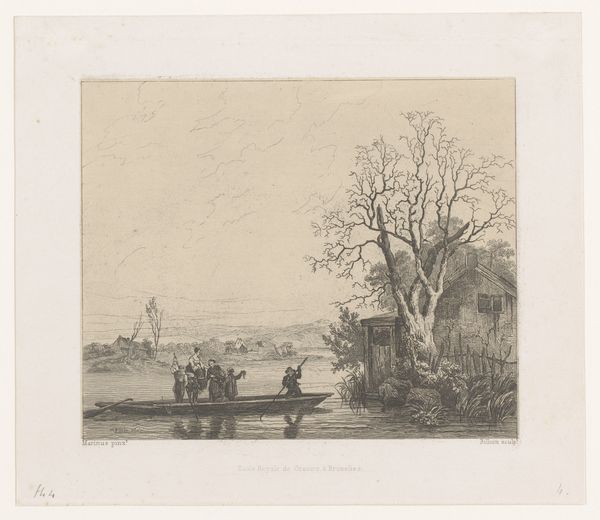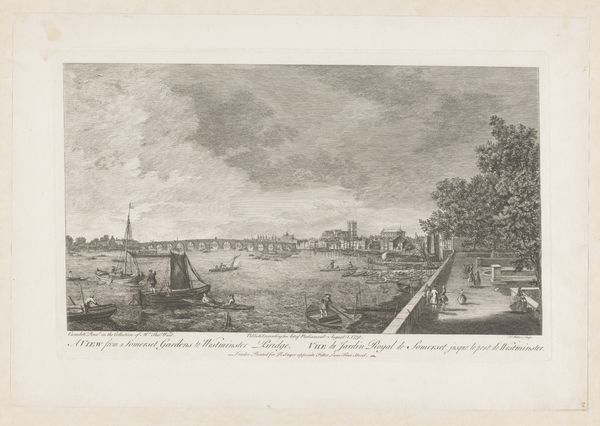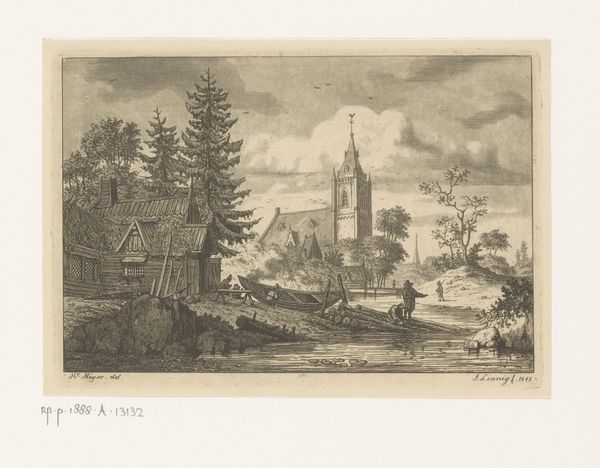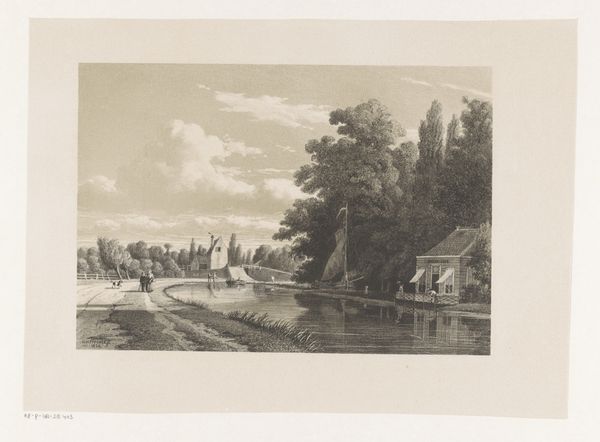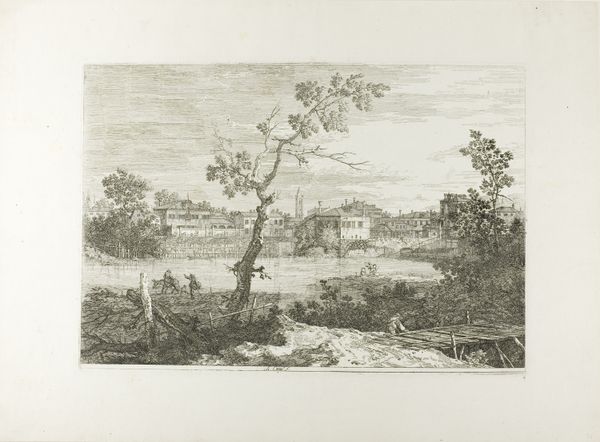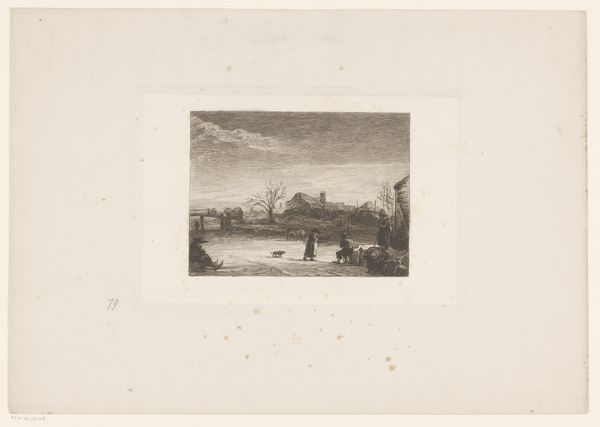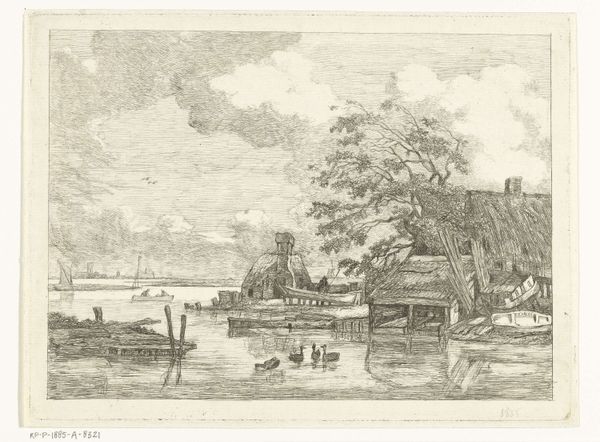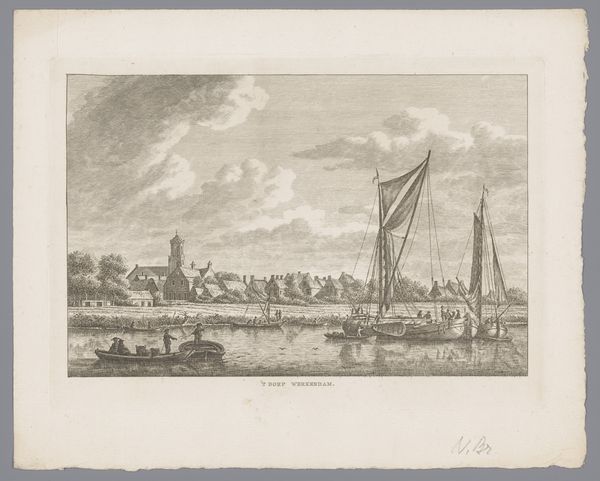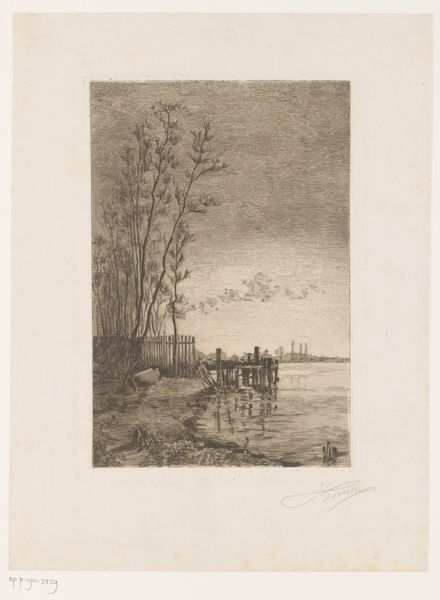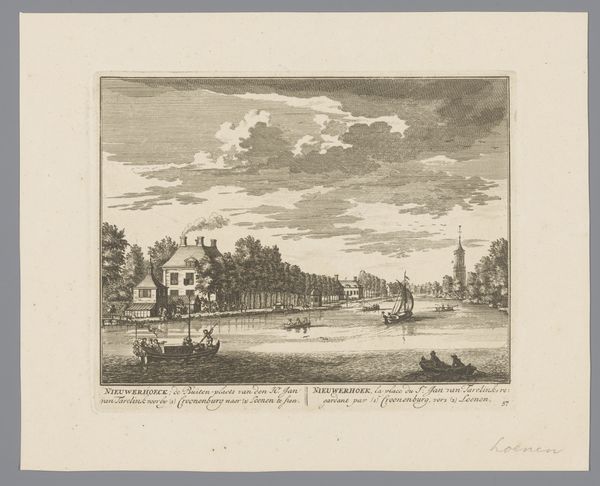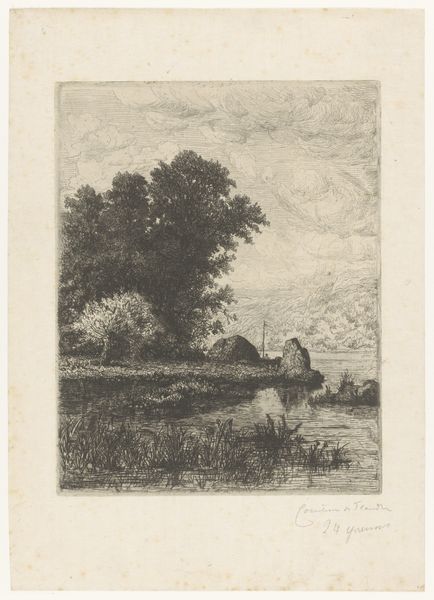
drawing, print, etching, paper, ink
#
drawing
#
16_19th-century
# print
#
etching
#
landscape
#
paper
#
ink
#
cityscape
#
realism
Dimensions: height 403 mm, width 283 mm
Copyright: Rijks Museum: Open Domain
Editor: Here we have Jules Guiette's etching, "Gezicht op een aan het water gelegen stad," which roughly translates to "View of a city located by the water." It was made sometime between 1862 and 1901. I'm struck by the quietness of this piece, almost melancholic. What stands out to you? Curator: The stillness you observe is quite palpable, isn’t it? I see a landscape punctuated by the steeple of a church or civic building. Steeples, universally, point toward something beyond, a reaching toward the heavens. Water too, holds symbolic weight. Do you see any tension, or harmony, between the earthbound city and those aspirations? Editor: I hadn’t really considered the steeple in that light, more as just part of the cityscape, I guess. There is the sense of upward movement mirrored by the tall, slender trees, versus the horizontal spread of the city and water. Does that relate to the style of realism depicted here? Curator: The Realist movement found beauty in everyday life. Yet even in apparent straightforward depictions, symbolic layers emerge. Notice the subtle gradations in the sky, almost oppressive above the scene. It evokes Romanticism's fascination with the sublime. And look at the birds, in the immediate foreground; what emotions do these trigger? Editor: Freedom maybe? A contrast to the static buildings. Thinking about it now, it makes me feel like I’m also longing to fly away! Curator: Yes, symbols, embedded deep within our cultural psyche, tap into primal emotional responses. Editor: This exploration makes me want to re-evaluate how quickly I consume art. I've realized it's like skimming the surface when so much more lies beneath. Curator: Precisely! Art isn’t simply *seen*; it's felt, interpreted, and ultimately, lived through the tapestry of our own experiences and memories.
Comments
No comments
Be the first to comment and join the conversation on the ultimate creative platform.
